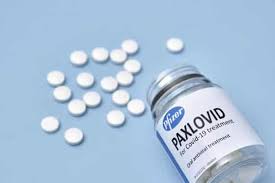The first tablet against COVID-19, a Pfizer medicine that Americans will be able to take at home to prevent the virus’s worst symptoms was approved by US health regulators on Wednesday.
The long-awaited achievement comes as the number of illnesses, hospitalizations, and deaths in the United States continue to rise, and health experts warn that a wave of new infections caused by the omicron strain might overwhelm hospitals.
Paxlovid, a speedier technique to treat early COVID-19 infections, will be available in restricted quantities at first. All of the previously approved anti-disease medications require an IV or injection.
Merck’s antiviral tablet is also likely to receive FDA approval soon. However, because of its low side effects and greater effectiveness, including a nearly 90 percent reduction in hospitalizations and fatalities among patients most likely to develop severe disease, Pfizer’s medicine is almost guaranteed to be the favored alternative.
“It has a high efficacy, few side effects, and it’s an oral medication.” “It checks all the boxes,” Mayo Clinic’s Dr. Gregory Poland said. “In a high-risk population, you’re looking at a 90 percent lower risk of hospitalization and mortality – that’s incredible.”
Pfizer’s medication has been approved by the Food and Drug Administration for adults and children aged 12 and up who have a positive COVID-19 test and early symptoms and are at high risk of hospitalization. This includes the elderly and those suffering from obesity or heart disease, while the medicine is not suggested for anyone suffering from severe renal or liver disease. The medicine is only available to children who weigh at least 88 pounds (40 kilograms).
Both Pfizer and Merck’s pills are predicted to be successful against omicron because they don’t target the spike protein, which contains the majority of the variant’s dangerous mutations.
Pfizer presently has 180,000 treatment courses accessible around the world, with 60,000 to 70,000 in the United States. By the end of January, the business aims to have 250,000 units available in the United States.
Early shipments to the hardest-hit areas of the country are expected to be rationed by federal health officials. The limited supply is owing to the manufacturing time, which is now around nine months, according to Pfizer. Next year, the company claims it will be able to cut production time in half.
The US government has committed to buying enough Paxlovid to treat ten million individuals, and patients will receive it for free. According to Pfizer, it is on track to deliver 80 million courses worldwide next year, thanks to contracts with the United Kingdom, Australia, and other countries.
President Joe Biden described the pill as a “major step forward on our route out of the pandemic,” adding that his administration will work with states to ensure that it is distributed fairly.
Vaccination remains the best strategy to protect against COVID-19, according to health experts. However, with roughly 40 million adults in the United States still unvaccinated, effective drugs will be critical in thwarting current and future outbreaks.
More than 140,000 new infections are reported every day in the United States, and government officials worry that the omicron type could send case counts rising. Federal officials verified earlier this week that Omicron has already spread across the country to become the prevalent strain.
Experts warn that Paxlovid’s initial impact may be limited in light of this.
COVID-19 has been treated with biotech-engineered antibody medicines for more than a year. However, they are costly, difficult to make and require an injection or infusion, which is usually administered in a hospital or clinic. In addition, laboratory data indicates that the two most commonly used antibody medicines in the United States are ineffective against omicron.
Pfizer’s tablet has its own set of problems.
To acquire a prescription, patients must have a positive COVID-19 test. Paxlovid is only effective if taken within five days of the onset of symptoms. With testing supplies running low, experts are concerned that patients may be unable to self-diagnose, get tested, visit a doctor, and pick up a prescription within the allotted time.
“I completely expect the effectiveness of this medicine to fall outside that window of time,” said Andrew Pekosz, a virologist at Johns Hopkins University.
The FDA made its decision based on data from a 2,250-patient study that showed the drug reduced hospitalizations and fatalities by 89 percent when given to persons with mild-to-moderate COVID-19 symptoms within three days of onset. At the end of the 30-day study period, less than 1% of patients using the medicine were hospitalized, and none died, compared to 6.5 percent of patients hospitalized in the fake pill group, which included nine deaths.
Pfizer’s medication is a protease inhibitor, a class of antiviral agents that have changed HIV and hepatitis C treatment for decades. The medications prevent viruses from multiplying in the human body by inhibiting a critical enzyme.
Each session of Pfizer’s medication, which consists of three pills taken twice a day for five days, will cost roughly $500 in the United States. Paxlovid is one of the medications, while the third is an antiviral that helps.

















